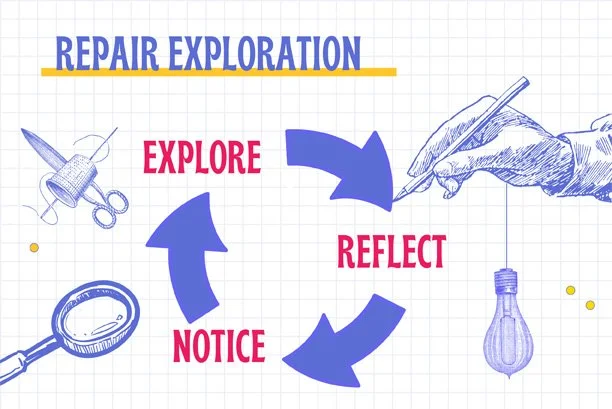2022
Excerpts from a teaching resource developed by a collaboration among Agency by Design Oakland, Maker Ed, and The Culture of Repair Project.
A Repair Mindset
The driving questions behind our work are:
→ “What characterizes a disposition toward repair?
and
→ “How can we cultivate a disposition of repair?
Dispositions lie at the heart of our Culture of Repair Working Group’s inquiry. To help us understand how dispositions operate and to support us in identifying and describing the disposition of repair, we’ve drawn on insights offered by the Triadic Theory of Dispositions. Developed by Project Zero researchers, … this theory posits that all dispositions involve three separate but necessarily interrelated components: ability, inclination, and sensitivity.
Ability is the possession of the means or skill to do something; inclination is a motivation to invest effort in an activity or thinking; and sensitivity is how likely a person is to notice when they will use a specific way of thinking or doing.
Dispositions occur “when these three concepts coalesce - the capacity to do something, the motivation to do it, and the sensitivity to appropriate occasions to do it”.
This frame has allowed us to develop our own set of indicators for the key abilities, inclinations, and sensitivities that characterize a disposition to care for and repair objects. These indicators, detailed below, support us not only to identify this disposition whenever and wherever it is at play but also to cultivate and nourish it into a strong stance people take when interacting with objects and systems in the pursuit of creating more ethical and just worlds. We hope these indicators empower educators, in particular, to recognize and facilitate a repair mindset in themselves and their learners. …
Inclinations for repair involve the urge to care for objects, the tendency to value objects and see what others value, and the drive to intervene in an object’s expected lifecycle.
Abilities to repair are often easier to spot or assess than inclinations and include not only the know-how and skills to use tools and materials to fix something, … but also the ability to problem solve with what is available, … to create time & space to care for objects, …. Other related abilities include the ability to look closely to identify areas of repair and to source parts and knowledge necessary for accomplishing repair. …
The key abilities and inclinations described above don’t constitute a disposition of repair unless complemented by certain sensitivities to opportunities to repair. These sensitivities can include the following: awareness of the possibility of repair and the possibility of a divergent repair; noticing the connection to cultures of repair (elders, other times, places, people); and more …
When someone displays the inclinations, abilities, and sensitivities described above, in concert, we say they have a repair mindset. We believe that a repair mindset enables and emboldens people to care more deeply about the world, the people, the objects, and the systems in which we’re all interconnected. On a concrete level, having a repair mindset inclines people to disrupt the cycles of mass-consumption and waste which tax the earth and harm the delicate ecologies that make life flourish. And on a general level, having a repair mindset motivates people to create sustainable futures and relationships, honoring the world as a place full of possibility.
Download the Toolkit in full HERE.
References:
Perkins, D. N. et al. "Beyond Abilities: A Dispositional Theory of Thinking." Merrill-Palmer Quarterly, 39, 1, 1993, 1-21.
Clapp, Edward P., et al. Maker-Centered Learning: Empowering Young People to Shape Their World. Jossey-Bass, 2016. p. 104.


